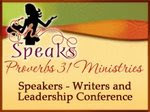 The Jewish Project
The Jewish Project Tishrei 14, 5770
Today’s post is in response to two bloggy friends who raised a question regarding the Jewish calendar. I had originally intended to answer the question and continue on with what I had planned for my post however, once I began researching the calendar, I was blown away by its Biblical complexity. Therefore, I decided to dedicate today’s post to the Jewish calendar.
As a point of reference, I’ll start with our calendar. We use the internationally accepted civil Gregorian calendar, established on February 24, 1582 by Pope Gregory XIII. It is an arithmetical solar calendar and uses the Anno Domini counting system for our year. As in, October 2, 2009 years since the birth of Christ.
The Jewish Calendar is a lunisolar calendar. It’s based on 12 Lunar months, each consisting of 29 or 30 days and each beginning with a New Moon.
Because of the time differences between a lunar and solar calendar, the Gregorian calendar is ahead of the Jewish calendar by 11 days. Therefore, when enough years go by that the accumulated days are approx 30, an intercalated month is added to the Jewish calendar. (this information is for the highly scholastic individuals. I, for one, have already forgotten it now that’s it been typed on paper.) J
Here’s the fascinating part (to me anyway). G-d dictated this calendar to Moses. It may have changed some over the millennia or perhaps not. I suppose only G-d has that answer. But, by any means, it is G-d’s calendar and is perfect in its formation. The lunar calendar is devised in such a way that the lunar events are used to determine feast cycles, agricultural cycles as they pertain to dry/rainy, harvest/sewing times. It is also used to determine which Torah portions are read publicly, which is fascinating when you begin to study the correlation between Torah readings and world events that take place at the same time. And, it also determines Shabbat days, seasons and years.
The first month of the calendar is found in Exodus 12:2, 13:4 and Deut 16:1. Depending on your translation it is called Nisan, Nissan, Abib or Aviv. It all translates Spring. (Side note – it was very neat to discover my name in Hebrew is Aviv.)
The weekly cycle is a mirroring of the seven day creation story in the Book of Genesis (specifically Gen 1:5, 8, 13, 23, 31 and 2:2), with a day gauged from sunset to sunset. It translates as follows:
Yom Rishon – first day – Sunday
Yom Sheni – second day – Monday
Yom Shlish – third day – Tuesday
Yom Revi – fourth day – Wednesday
Yom Chamishi – fifth day – Thursday
Yom Shishi – sixth day – Friday
Yom Shabbat – seventh day – Saturday
This was great information for me since now I can answer the question “Why do Jews celebrate the Sabbath on Saturday?” (Remember, I’m starting from s-c-r-a-t-c-h)
And, the answer to the question posed by my bloggy friends. The Jewish calendar uses the Anno Mundi numbering system. Latin for “the year of the world”, this numbering system dates the years from the epoch of one year prior to creation as determined by Rabbinical reckoning.
If I may borrow a quote….how they determined the year of creation is a topic that’s above my pay grade.
The dichotomy between the Anno Mundi and Anno Domini numbering systems brings up many questions that I could ramble on about, but it is late and this post is long, so I will stop.
In light of learning (the very basics) about the calendar, at sunset today Shabbat will begin. My family will be lighting the candles and celebrating with a family night. How that goes should make for an interesting post.
And, I have discovered that Sukkot is the feast of Tabernacles which begins Tishrei 15 or Oct 3rd. I still have not figured out how our family will be celebrating, but I will definitely keep you posted.
Until Monday…Shalom!


















 My husband (who is holding the camera, hence his weird facial expression!) took this picture of us sitting on the bus. We are in the Tel Aviv airport parking lot and had been traveling for 36 hours w/no sleep.
My husband (who is holding the camera, hence his weird facial expression!) took this picture of us sitting on the bus. We are in the Tel Aviv airport parking lot and had been traveling for 36 hours w/no sleep.  Our first day of touring and our first panoramic glimpse of Jerusalem. We were standing on the Mount of Olives looking towards the old city.
Our first day of touring and our first panoramic glimpse of Jerusalem. We were standing on the Mount of Olives looking towards the old city. 

 (If you look close, Ferb is holding the TV remote and the TV which was right in front of him was turned on to the Disney channel)
(If you look close, Ferb is holding the TV remote and the TV which was right in front of him was turned on to the Disney channel) (This was Squeaker's bottom bunk where she found her brand new Simba plush toy nice and tucked in.)
(This was Squeaker's bottom bunk where she found her brand new Simba plush toy nice and tucked in.)


 (Teddy sitting on the table coloring)
(Teddy sitting on the table coloring)


























